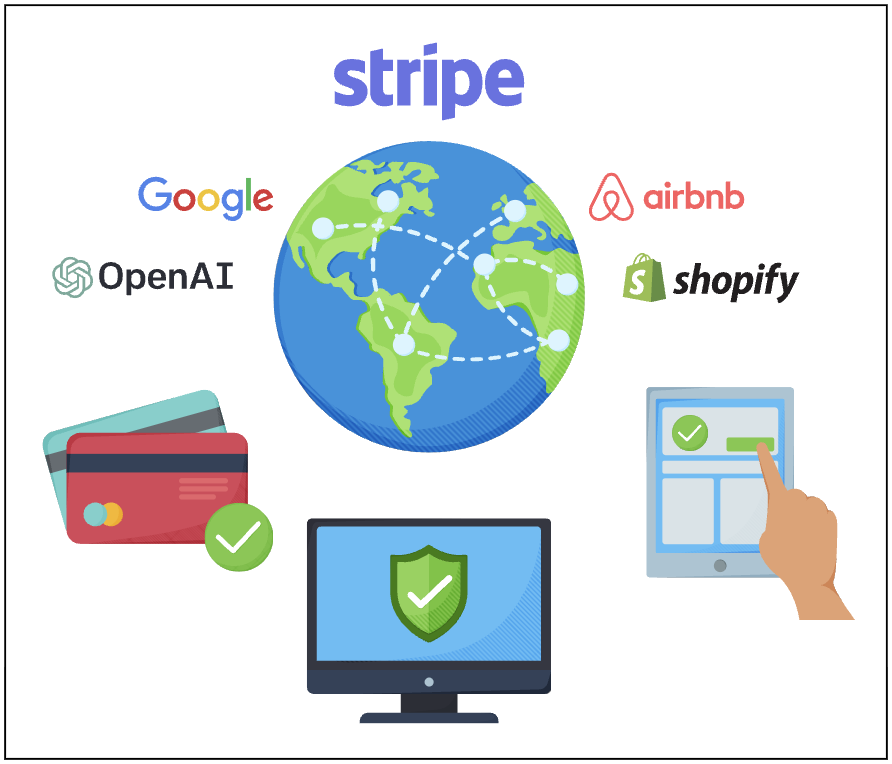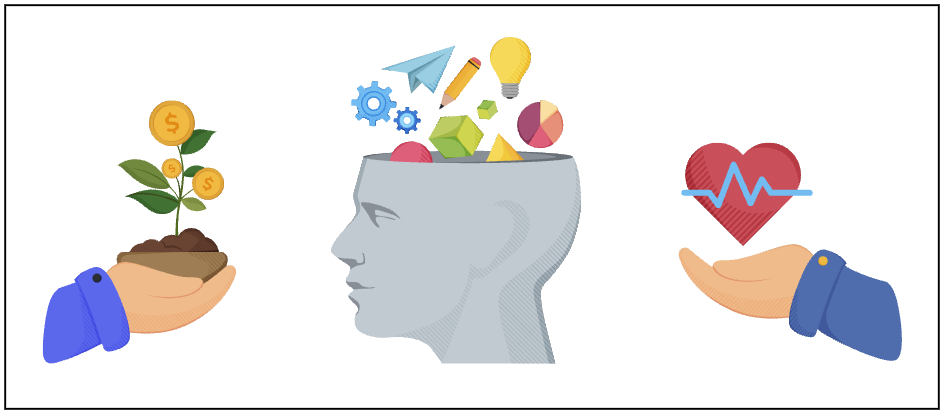Stripe is a leading online payments platform used by millions of businesses, including companies like OpenAI, Amazon, Shopify, Lyft, and Slack. It helps businesses accept payments online and manage their financial operations.
But Stripe isn’t just about payments—it’s also known for its strong engineering culture, focus on user experience, and mission to help more businesses thrive online by making internet commerce easier and more accessible. That’s one reason so many talented people are eager to join the team!
Stripe’s hiring bar is high, and its interviews are designed to thoroughly and consistently evaluate candidates’ skills. They are structured to assess both technical proficiency and cultural fit. Whether you’re aiming for a role in engineering, product management, data analysis, or operations, understanding the interview stages can significantly boost your preparation. This blog will walk you through all the stages of the interview process for technical roles, what to expect at each step, and how to set yourself up for success.
About the company: Stripe
Stripe was founded in 2010 by brothers Patrick and John Collison to facilitate online payments for developers and businesses. What started as a simple tool for accepting credit card payments has become one of the world’s most influential financial technology companies.
Today, Stripe powers payment infrastructure for millions of businesses from small start-ups to global giants like Shopify, Amazon, and Google. In addition to payments, Stripe offers tools for managing billing, preventing fraud, handling taxes, and more, helping businesses run their operations entirely online.

The company remains privately held and is valued at over $50 billion. With a global workforce and offices in major cities like San Francisco, Dublin, London, and Singapore, Stripe continues to expand its reach while staying focused on building tools that support the economic growth of the internet.
Why work at Stripe: Perks and benefits
Stripe offers a high-impact, growth-oriented work environment that attracts top talent worldwide. Here’s why Stripe stands out as an employer:
- Competitive compensation: Stripe offers top-tier salaries, bonuses, and equity to recognize and reward your impact.
- Mission-driven work: Work on meaningful problems that help grow the GDP of the internet and empower global businesses.
- Flexible work setup: Enjoy a hybrid or remote-friendly environment that supports your productivity and lifestyle.
- Growth opportunities: Benefit from learning stipends and strong mentorship to advance your career.
- Health and wellness: Stripe provides comprehensive medical, dental, vision, and mental health benefits for you and your family.

Additionally, Stripe offers other benefits such as generous parental leave, recharge weeks, paid time off, and fosters an inclusive culture through active Employee Resource Groups (ERGs).
Stripe’s interview process
Stripe’s interview process is designed to be thoughtful, thorough, and candidate-friendly. It typically includes the following stages:
- Recruiter screen: This is a 30-minute call, or possibly two, to assess fit.
- Technical phone screen (usually 1 hour long): A live coding session in the programming language of your choice, with problems that reflect real-world tasks.
- On-site or virtual interview loop (3–5 rounds): Several one-hour sessions with a team of engineers and managers, covering areas such as:
- Coding
- System Design
- Bug-fixing/debugging
- API integration
- Behavioral
- Offer or feedback: The recruiter will call with the results. If all goes well, a job offer usually follows.
The following illustration summarizes Stripe’s technical interview process:

Let’s dive in and closely examine what each interview stage involves.
1. Recruiter screen
Once your resume is shortlisted, a recruiter will reach out for an initial phone call. It focuses on your resume, experience, and motivation. This conversation is designed to assess:
- Your interest in Stripe
- High-level background and experience
- Role fit and potential team alignment
- Salary expectations and timeline
Expect questions like “Why Stripe?” and “What interests you about this role?”. Interviewers want to see that you understand Stripe’s mission, i.e., expanding the online economy, and its values such as customer focus, ownership, and global impact. Be ready to highlight any payments, e-commerce, or finance-related work you’ve done, and express genuine enthusiasm for Stripe’s products. The recruiter may also review the job’s scope and logistical details such as location, salary range, and timelines.
Sometimes (if required), Stripe conducts a second, shorter recruiter call after the initial screen to prepare you for the on-site process or answer any new questions.
2. Technical phone screen
After the recruiter screen, you’ll typically have a technical phone screen lasting around one hour. This live coding interview is conducted over video; tools like Zoom with screen-sharing or CoderPad are common. Let’s look at a few important points about this stage:
- Language and setup: You can code in any programming language you like. You can either share your IDE or use a web-based editor like CoderPad. Make sure your internet connection is stable and your environment is ready.
- Question style: Stripe’s questions are usually practical and iterative, not purely theoretical puzzles. In other words, don’t expect standard LeetCode questions. Interviewers often give multi-part coding challenges that mimic real engineering tasks. For example, one candidate described a coding screen as a “multistage question” in five parts: you write a simple class, add features and tests in stages, handle edge cases, and so on. It tests your ability to write correct, clean code and explain your thinking, rather than just flashy algorithms.

- What Stripe interviewers look for:
- Problem-solving and code quality: Focus on writing correct, clear, readable, and well-tested code.
- Communication: Clearly explain your thought process, ask clarifying questions, and show collaborative problem-solving skills.
- CS fundamentals: A strong grasp of core concepts like data structures, algorithms, and complexity is essential.
- Live code execution: Unlike some companies’ whiteboard interviews, Stripe lets you write and run code. They use an online environment, typically CoderPad, where you can write, run, and test the code. Use print statements or a debugger if you need them to get to the correct solution.
3. On-site loop interviews
The on-site interview, usually spread over half a day, consists of 4–5 rounds, each targeting a specific dimension. Nowadays, Stripe interviews can be all-virtual or (occasionally) at a Stripe office, depending on role and location. Stripe’s US engineering workforce is now largely remote, so candidates often interview from home.
Coding interview (1 hour)
This is similar to the phone screen, but with a fresh problem. You’ll code in real time, using an IDE of your choice. You may again face a multi-part challenge. Interviewers look for correct, clean code and teamwork: share your ideas and be open to hints.
Bug bash/ debugging (1 hour)
You’ll be given a piece of code (often broken) and asked to find and fix bugs. This simulates debugging a real Stripe codebase. Approach it methodically: read the stack trace, write tests, and step through the code. Talk through your reasoning as you hunt for errors. The interviewer isn’t just checking if you “fix it,” but how you investigate and test your solution. One candidate described this round as “Engineer On-call” simulation, where you’re expected to isolate problems quickly and explain each step.
System Design (1 hour)
Here you’ll design a software system or architecture. For mid-level roles, the question might focus on high-level system design, for example, “Design an observability system for our API”. Draw on a digital tool as Stripe allows drawing tools or CoderPad’s diagramming.
Focus on scalability, reliability, and maintainability. State your assumptions, define interfaces and data flows, and consider trade-offs. The interviewer may challenge parts of your design, so be ready to defend or revise your choices. One interviewee noted that this round often starts broad and then dives into depth on one component. Be honest about your knowledge and avoid bluffing; Stripe values clear understanding over bluster.
Integration task (1 hour)
This is somewhat unique to Stripe. You’ll work with the Stripe API or a realistic integration scenario. For example, you might write code to make REST API calls, parse JSON, or simulate how a merchant’s system would interact with Stripe services. This tests practical coding skills in a domain-specific context.
Think of it as a take-home task done on the spot: ask clarifying questions, treat it like a real work assignment, and double-check your results.
Behavioral interview (1 hour)
Finally, you’ll meet with a hiring manager or senior leader. This round explores your work experience and culture fit. Expect questions about challenges you’ve handled, team projects, and leadership stories. Prepare specific examples highlighting Stripe’s values: focus on delivering for customers, taking ownership, and working in diverse/global teams. Be authentic, energetic, and ready to explain your resume in depth. This is also a chance to ask questions about the team, growth paths, and company culture.
4. Final review and offer
Once the loop interview is done, your interviewers submit feedback, which a hiring committee reviews. Stripe takes a holistic view, so even if one round was average, outstanding performance in others can balance it out.
After approval, the recruiter will contact you with an offer or next steps.
How to prepare for Stripe interviews
Here’s how to boost your chances:
- Understand the business: Read Stripe’s docs, blog, and recent news.
- Practice interviews: Use mock interview platforms or friends for prep.
- Brush up on core skills: Practice coding, System Design, or case solving. Practice various interview questions on platforms like Educative, LeetCode, or HackerRank.
- Reflect on your values: Stripe wants curious, humble, and mission-driven people.
Recommended resources
- Grokking the Coding Interview Patterns: Master 28 essential coding patterns to solve thousands of interview questions. Efficiently prepare for coding interviews with the ultimate course created by FAANG engineers.
- Grokking the Low-Level Design Interview Using OOD Principles: A proven guide to object-oriented design (OOD) interviews, created by engineers from top tech companies. Master OOD fundamentals & practice real-world interview questions to prepare with confidence.
- Grokking the Modern System Design Interview: The ultimate guide to the System Design Interview—developed by FAANG engineers. Master distributed system fundamentals and practice with real-world interview questions and mock interviews.
- Grokking the Behavioral Interview: Whether you’re a software engineer, product manager, or engineering manager, this course will give you the tools to thoroughly prepare for behavioral and cultural questions. But beyond even technical roles, this would be useful for anyone in any profession.
- Grokking the Product Architecture Design Interview: The essential guide to API design and product design interviews—developed by FAANG engineers. Master product design fundamentals and get hands-on with real-world APIs.
Stripe maintains a high hiring standard with a well-organized interview experience. They care deeply about hiring thoughtful, motivated individuals who want to solve real problems at scale. With the right preparation and mindset, you can position yourself to make a strong impression.
Good luck, and remember: being clear and steady under pressure goes a long way!
